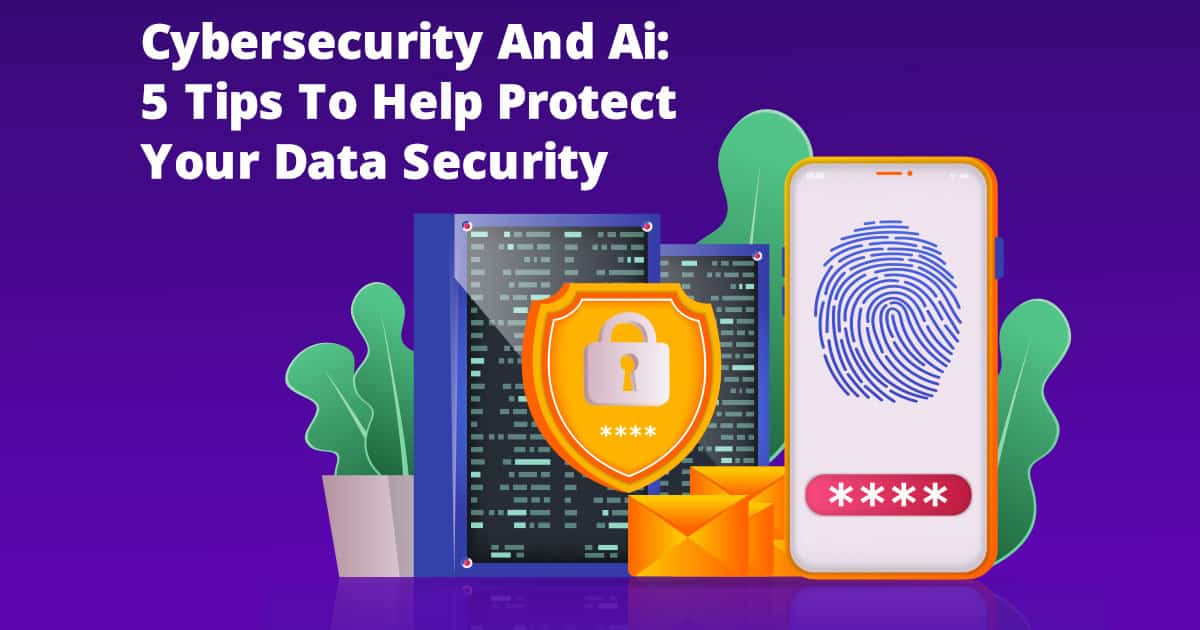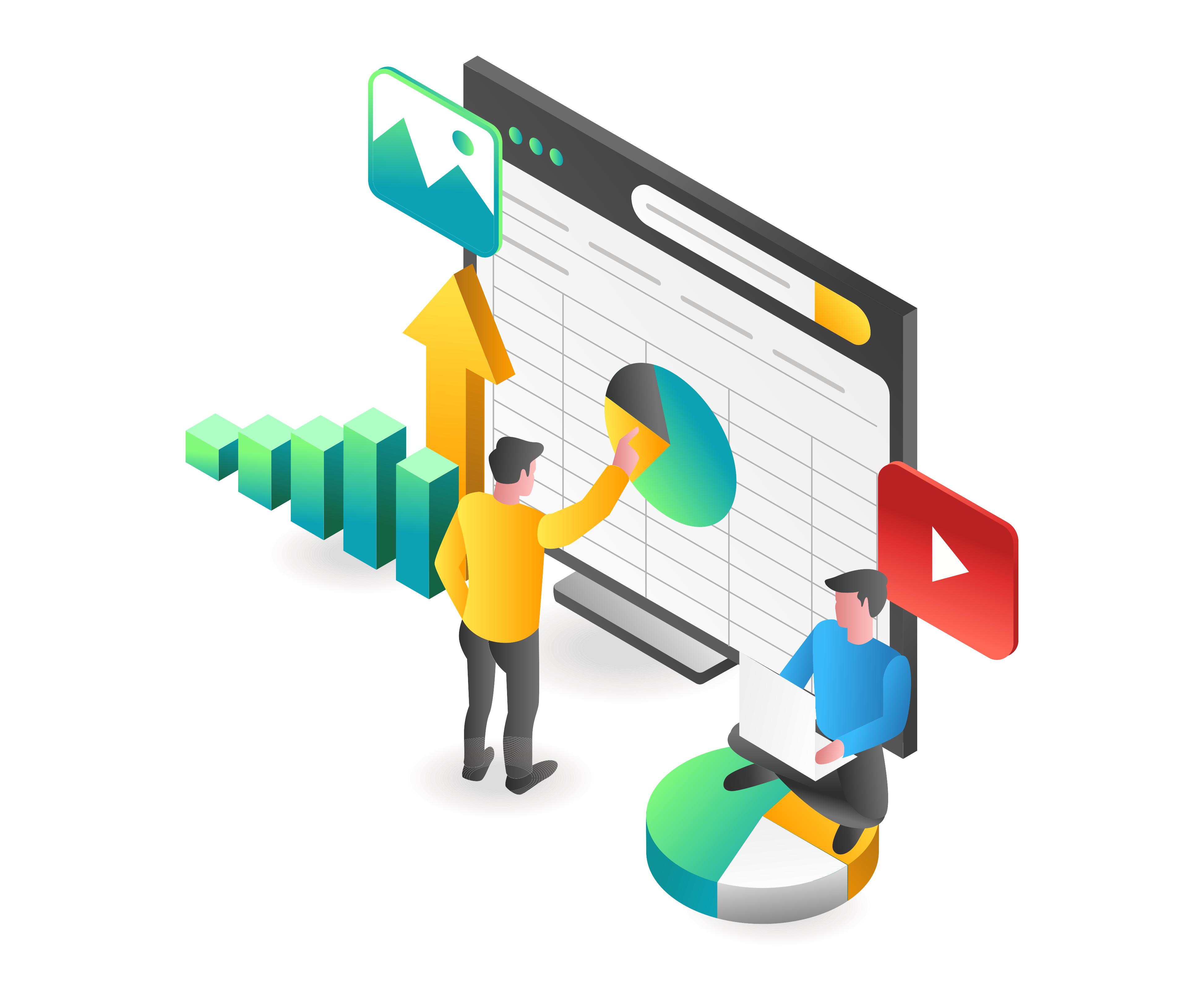
Cybersecurity And AI Attacks Will Affect You
Imagine you’re sitting at your workspace, and you receive an email from your direct supervisor from their personal email account with an urgent request.
You know they are out of town; they even mention where they are, and the alternate time zone in the email.
As you read it, the phone rings, and you pick up to hear your supervisor telling you they just emailed you but wanted to call to make sure you got the request. You recognize their familiar accent and voice when they say, “Can you take care of it asap?”
The request may be for a financial transfer of funds, restricted access to some part of your network, or any other significant request that would motivate a highly skilled hacker.
This exact case has been occurring since 2019, and the quality of the fake voices has improved significantly in the last four years.
This case is only one example of how hackers are upping their game and compromising systems and people with new AI technology.
We’ll discuss a few other frequent AI hacks you should be keenly aware of.
We’ll give you the vital information you should share with the people inside your business.
Finally, we’ll review four tips you can start doing today to help defend and protect the systems and people you support.

Knowing What To Look For Is The Most Important Step
There are several ways that attackers are using artificial intelligence (AI) in cyber attacks right now.
Spam Filters Are Obsolete
AI has been used to analyze thousands of attempts at email filters, captcha versification, and everyday network actions. AI will discover and leverage your weakest points and manipulate data to avoid filtering or flagging.
AI-powered malware: Hackers have designed some malware to use machine learning algorithms to evade detection by traditional security systems. These AI-powered malware strains are more challenging to defend against because they can learn to adapt and change their behavior to avoid detection.
Your Eyes And Ears Are Lying To You
Deepfake attacks: Deepfake technology can create fake videos or audio recordings that are difficult to distinguish from real ones.
Attackers can use deep fakes to impersonate someone in a phishing attack or, more accurately, targeted spearfishing attacks. Hackers use these types of attacks to gather information or compel people to do damaging actions.
The 30-Second Web Designer
AI-powered phishing attacks: Attackers are using AI to create more sophisticated phishing attacks that are harder to detect. For example, they may use AI to generate convincing fake emails or websites that appear legitimate.
AI can clone any target website in a matter of seconds and customize it based on the specific target to give the impression of a user accessing an internal resource.
Hive Mind Zombies
AI-powered DDoS attacks: Distributed denial of service (DDoS) attacks can be powered by AI to make them significantly more challenging to defend against in general, as well as from multiple attacks.
AI can generate large volumes of traffic, similar to traditional DDoS attacks, making it harder for a network to handle and potentially causing it to crash.
The primary difference is that AI can actively monitor how your system and people handle these attacks. AI can identify hacking opportunities resulting from your team’s actions when the active DDoS forces you to take immediate action.
$&*$ You, Pay Me
AI-powered ransomware: Ransomware attacks use AI in several different ways simultaneously.
Hackers can identify Individuals or entire organizations to target. AI can locate email addresses and create highly personalized dynamic emails designed to circumvent countermeasures.
AI emails are significantly more effective at reaching their goals because they have reviewed tens of thousands of similar attacks to determine which are most successful.
Once an AI-powered Ransomware attack gains access to a system, it can quickly diagnose weak points to elevate the attack, extract data, and automate the process of encrypting and decrypting data, making it more efficient for attackers.
Data Processing Behemoth
Hackers can use machine learning algorithms to analyze expansive amounts of data to identify patterns and trends which are not immediately obvious to humans.
Analyzing so much data can enable them to identify and exploit vulnerabilities in systems and networks that may not have been detected using traditional security-compromising tactics.

Using CyberSecurity And AI to your Advantage
It’s important to note that AI can be used to defend against cyber attacks, protect against threats, and respond to attacks.
Ways To Use AI In Your Business Data Processes
- Use machine learning algorithms to detect and defend against threats in real-time.
- Analyze vast amounts of data to identify anomalies and patterns that may indicate a threat is present. Identifying dangers can be particularly useful in detecting advanced persistent threats (APTs), highly targeted and sophisticated attacks designed to evade traditional security measures.
- Analyze network traffic, user behavior, and other data sources in real-time to identify signs of an APT, allowing organizations to mitigate the threat before it can do significant damage.
- Automate many of the tasks involved in cybersecurity, such as patch management and vulnerability management.
- Automation can help organizations to be more proactive in their approach to security because they can quickly address potential vulnerability exploits before they happen.
- Incident response. When an attack does occur, AI can help organizations quickly identify the source of the attack and take appropriate action to contain the damage.
- In large-scale attacks that involve multiple vectors, AI can analyze and prioritize the various threats to help organizations focus their efforts on the most pressing issues.

How To Discuss AI Threats With Your Team Users?
The idea of hackers using fake audio or video seems a little far-fetched, but today’s capabilities are already fooling many people, and it’s a great way to grab the attention of your team.
A quick visit to Chris Ume’s TickTock page dedicated to Tom Cruise deepfakes, or his Instagram page will provide some funny and slightly scary realities of the capabilities already in use.
The Most Important Information You Should Provide To Your Team
- The importance of always staying vigilant.
- Only using internal tools and processes to complete sensitive actions.
- Always double-checking or getting secondary approval on anything unusual.
- Keeping them informed of the latest attack methods in the workplace.
Overall, in addition to creating new challenges, AI in cybersecurity is also helping organizations be more proactive and efficient in their approach to security.
To protect against these threats, organizations need to adopt a multi-layered approach to cybersecurity that includes both traditional security measures and AI-powered solutions. This can help to identify and block a wide range of threats, including those that AI powers.

The Top 5 Things You Can Do To Protect Your Company From AI Cybersecurity Threats
Cybersecurity Ai Tips
1. Passwords
Remove passwords from your ecosystem as much as possible. This means partnering with a Single Sign-On Provider to incorporate SSO with multi-factor authentication to add a layer of security to your workforce's daily operations and prevent phishing attacks.
SSO can make it more difficult for hackers to gain unauthorized access, even if they are using AI tools to automate the process of attempting to guess passwords or bypass security measures.
2. User Education
Train employees on security best practices and the latest AI threats: Educate employees on the importance of security and how to recognize and prevent potential attacks, such as phishing scams.
3. Ai Tools
Leverage AI-powered security tools to detect and prevent attacks in real time. These tools can
- Analyze patterns and behavior to identify potential threats and respond accordingly.
- Keep all software and systems up to date with the latest patches and security updates to fix vulnerabilities that hackers could exploit.
- Monitor and protect sensitive data BY analyzing patterns and behavior to identify potential threats and respond accordingly.
- Regularly assess the organization's security posture and identify any weaknesses. This can include AI penetration testing and vulnerability assessments.
4. Response Plan
Implement robust incident response plans to ensure that attacks are effectively contained and mitigated if they do occur.
5. Identity Management (IAM)
Incorporate the principles of least privilege into your workforce with a robust Identity Management System (IAM).
An IAM will limit the actions every person can take, even if they are compromised. Additionally, an IAM will also ensure that any unauthorized access gained will only have the limited ability of that user.
Finally, an IAM will provide clear visibility of all user access, including any users with inappropriate access rights.
AI-Driven Threat Detection and Response
Artificial Intelligence (AI) is revolutionizing cybersecurity by enabling more proactive and adaptive threat detection and response mechanisms. Traditional security systems often rely on predefined rules and signatures, which can be insufficient against sophisticated cyber threats. AI, however, can analyze vast amounts of data in real-time to identify patterns and anomalies indicative of malicious activities.
Machine learning algorithms can learn from historical data to predict potential security breaches, allowing organizations to implement preventive measures before an attack occurs. For instance, AI can detect unusual user behavior, such as atypical login times or data access patterns, and flag these for further investigation. This proactive approach not only enhances security but also reduces the time and resources spent on responding to incidents.
Moreover, AI-powered systems can automate responses to certain threats, such as isolating affected systems or blocking malicious IP addresses, thereby minimizing the impact of attacks. By integrating AI into cybersecurity strategies, organizations can achieve a more robust and dynamic defense posture.
Ethical Considerations in AI-Powered Cybersecurity
While AI offers significant advantages in cybersecurity, it also raises important ethical considerations that organizations must address. One primary concern is data privacy. AI systems require access to large datasets, which may include sensitive personal information. Ensuring that data is collected, stored, and processed in compliance with privacy regulations is crucial to maintain user trust and avoid legal repercussions.
Another ethical aspect involves the potential for bias in AI algorithms. If the training data contains biases, the AI system may inadvertently perpetuate these biases, leading to unfair or discriminatory outcomes. For example, an AI system might disproportionately flag certain user behaviors as suspicious based on biased historical data. To mitigate this, organizations should implement regular audits of AI systems and incorporate diverse datasets during the training phase.
Transparency is also vital. Stakeholders should understand how AI decisions are made, especially when these decisions have significant consequences. Providing clear explanations of AI processes and maintaining human oversight can help ensure accountability and ethical integrity in AI-powered cybersecurity solutions.
Fundamental Takeaways
Overall, the use of AI in cybersecurity presents both opportunities and challenges.
While it can improve the ability of organizations to detect and defend against threats, it can also be used by hackers to launch highly sophisticated and targeted attacks.
It is essential for organizations to be aware of these risks and to take appropriate measures to protect themselves against them.
By taking these and other precautions, organizations can better protect themselves against the dangers of AI hackers and keep their data and systems safe.
